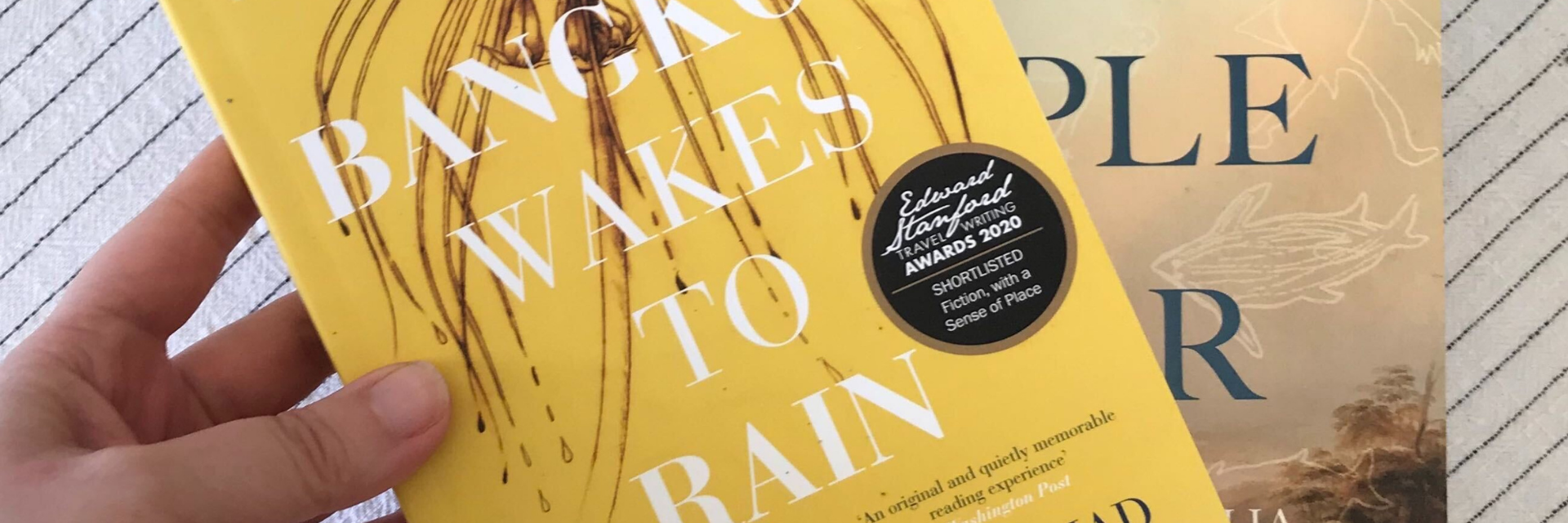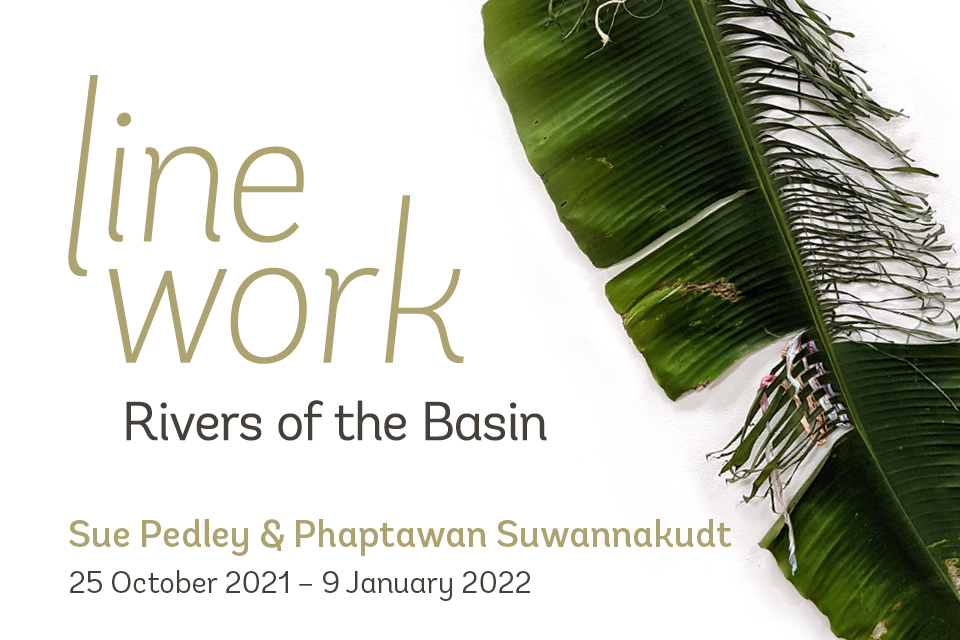Line Work: Rivers of the Basin
Reading List

In the lead up to our upcoming exhibition, Line Work: Rivers of the Basin, exhibiting artists Sue Pedley and Phaptawan Suwannakudt share the books that they have been reading, and have informed their new artworks.
Gerald and Margo Lewers: Their Lives and Their Work, Denise Hickey
Margo Lewers created the garden at Emu Plains and considered the plants, the layout and design as an integral part of her creativity. She shared the produce from her garden with family and friends and took great care in the presentation of food and flowers in her home life, including entertainment. Phaptawan and I created collaborative drawings inspired by exerts from this book in the development of our proposal and work. – Sue Pedley
People of the River: Lost worlds of early Australia, Grace Karskens
Our interest in the garden created by the Lewers’ expanded into researching the geological and colonial history of the land on which the garden is situated including the Nepean River. Grace Karsken works closely with the local Aboriginal people and provides deep insights into the evolving relationship between Aboriginal people and the white settlers. – Sue Pedley
I have read the Secret River by Kate Grenville which is a fiction book about ten years earlier. The book based is on the dark history of the atrocities done to the Aboriginal people by the settlers. However, The People of the River on the other hand, is a non-fiction book with factual details of names and places. The book reflects dynamic exchanges between the settler and the first nations people which nevertheless created the later generations of cultural dispossession. When Sue and I developed work for the exhibition Line Work: Rivers of the Basin, we each took turns reading the pages with the names, places, histories, incidents during the settlements in the river areas. Some of these names appeared as scripts in the collaborative sessions we worked together. We also commuted to the Home of the Lewers Bequest to explore and collect materials and ingredients from the garden through the guidance of Heritage Gardener Shayne Roberts, to reflect the history of the place by the river. I utilise the bamboo, the banana trees from the garden and one of the plants found by the river. Sue was informed by her Vietnamese friend it is widely used as home remedy for minor symptoms of bodily discomfort. The latter two also grow in my own home garden in the Inner West. This informed the direction of how I relate to the place and the river with my own stories and cultural perspectives. – Phaptawan Suwannakudt
Housekeeping, Marilynne Robinson
The story is of two sisters growing up in the home built by their grandfather in a lakeside town in Idaho (USA) close to a railway line. The book resonated in its environmental themes and its location and proximity to floods and fires. The family history within the home and its surrounds is deeply evocative exploring themes of transience and impermanence, loss and abandonment, memory and nature. – Sue Pedley
Entangled Life: How Fungi Makes Our World, Changes Our Mind & Shapes Our Future, Merlin Sheldrake
An inspiring book about fungi allowed me to think about the unseen aspects of a garden and landscape. The Lewers’ garden has large old trees and during the winter we saw evidence of fungi in the garden. I am interested in the unseen aspects of nature and our family histories and the potential for change if they are acknowledged. – Sue Pedley
Bangkok wakes to Rain, Pitchaya Sudbanthad
Bangkok is a city by the Chao Phraya River, my birthplace in Thailand. In the past the city was named the Venice of the East with the networks of Klong (canals) being utilised as the main channel for transportation where people commuted and traded daily. I had an intimate relationship with the river having always lived near the water where I bathed, shopped for food and groceries from boats, offered alms to monks and commuted during my childhood. The book Bangkok wakes to Rain depicts the stories of different people including a missionary from New England, a jazz musician, a swimming teacher, from different generations for two centuries, in an old house in Bangkok, which morphed and transformed into an underwater landscape where people adapted and continued living an amphibian life. The collapse of time and the tales in the book reflect the cultural context of family relations, beliefs, political conflicts, extensive habitat destruction, and environmental issues. I was finishing reading the book when Sue and I started the weekly meeting for drawing together during late 2019. I took Sue to the Cooks River near my house during one of the first meetings. The regular meetings continue to form the collaborative drawing Line Work series together. I consciously and unconsciously, with the context of this book in mind, made marks on the prepared materials through the instructions Sue and I alternate the role to give each other. – Phaptawan Suwannakudt
The Art of Time Travel: Historians and Their Craft, Tom Griffiths
When my partner, an English art historian saw how I transfixed in reading The People of the River, he then introduced The Art of Time Travel to me. I did not have to go further than chapter one, the Timeless Land: Eleanor Dark to learn how important this book is to the project we were dealing with. In the first chapter of the book, Griffiths contextualise how Dark reimagines the history in her fiction, by relating to the engagement of the writer and place Varuna, now the writers’ centre in Katoomba, when she writes her book the Timeless Land. The chapter begins with the powerful image when Bennelong and his father gazed out to sea from the clifftop, searching the horizon for the boat with wings. I further recommend the later chapters in this book which include: – The Cry for the Dead; Judith Wright, The History and Fiction; Inga Clendinnen, The Feel of the Past; Grace Karskens and Dr. Deep Time; Mike Smith. – Phaptawan Suwannakudt
